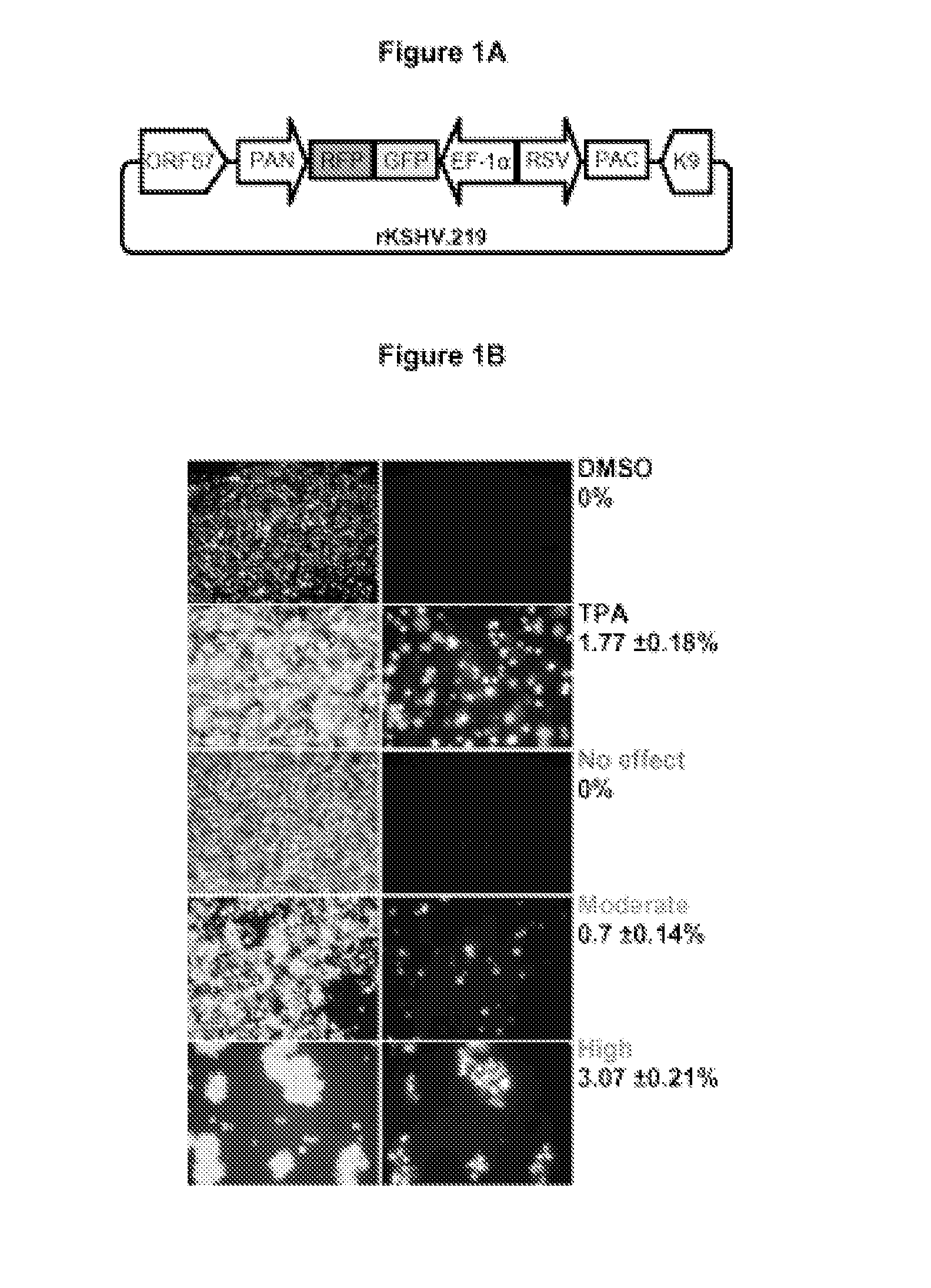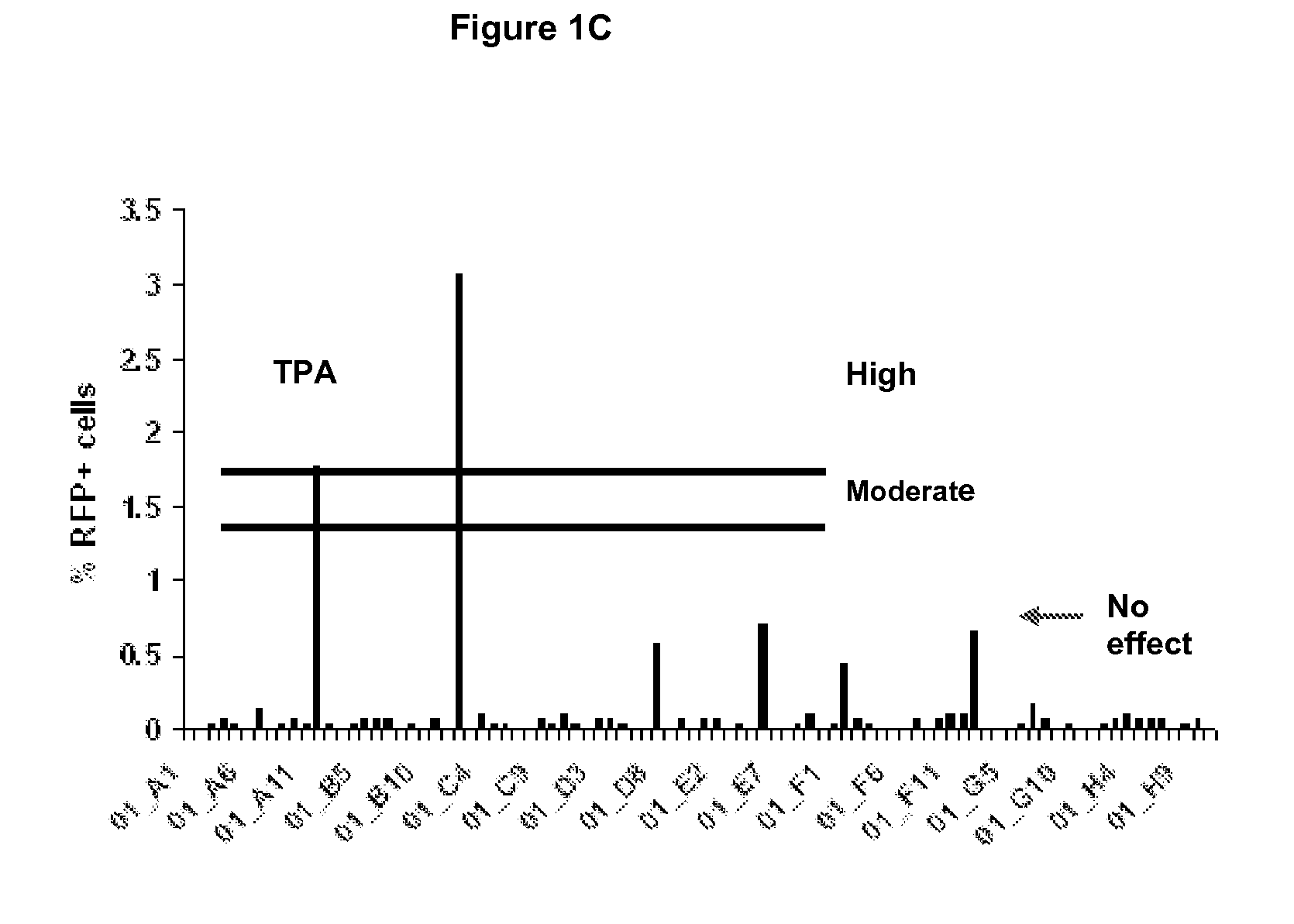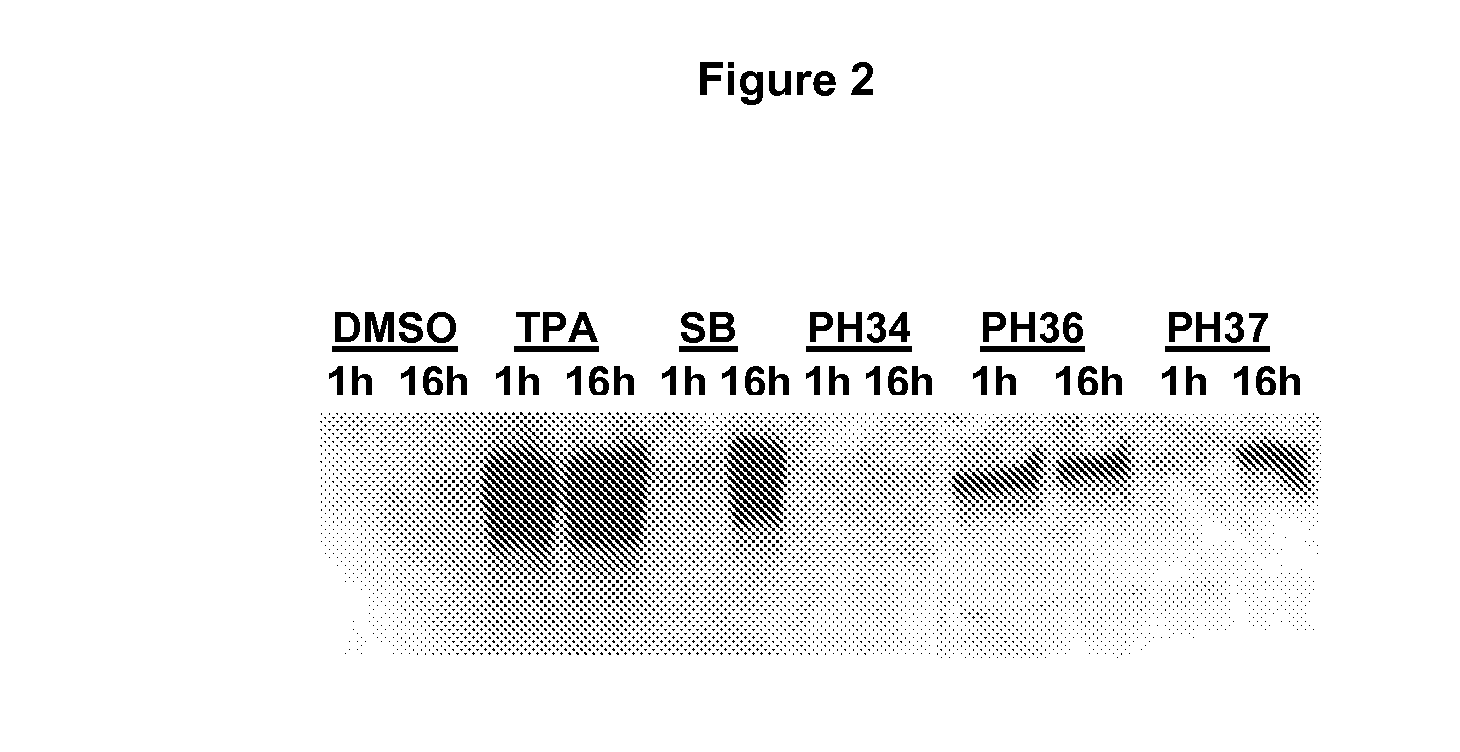Methods, Compounds and Compositions Relating to Activating a Latent Virus
a technology of latent virus and compound, applied in the field of activating latent virus, can solve the problem of virus eradication from the host in the latency of the virus
- Summary
- Abstract
- Description
- Claims
- Application Information
AI Technical Summary
Benefits of technology
Problems solved by technology
Method used
Image
Examples
example 1
Identification of Small Molecules which Induce the KSHV Lytic Cycle
[0126]To identify novel host proteins that induce KSHV reactivation, the present inventors utilized a primary effusion lymphoma (PEL) cell-line (JSC-1) that is infected with a dual-fluorescent recombinant KSHV (rKSHV.219)16. The present inventors screened the NCI DTP Diversity set (1990 compounds; http: / / dtp.cancer.gov) for inducers of the KSHV lytic switch RTA (replication and transcription activator or ORF 50), as viral protein RTA is necessary and sufficient to drive latent KSHV into lytic cycle17. PEL cells which harbor latent KSHV and ˜80% are latently co-infected with EBV (see review18. JSC-1 rKSHV.219 cells are thus naturally infected with latent KSHV and EBV, and superinfected with latent rKSHV.219. rKSHV.219 encodes green fluorescent protein (GFP) under the control of an EF1-α promoter and red fluorescent protein (RFP) under the control of the KSHV lytic PAN promoter (FIG. 1A). All latently infected cells th...
example 2
KSHV Induction Kinetics by Active Compounds
[0127]The present inventors had previously noted that conventional chemical stimuli for reactivating KSHV such as TPA (a phorbol ester) and sodium butyrate (SB, a HDAC inhibitor) work with different induction kinetics. TPA requires short exposure (immediate-kinetics; <1 hour) while SB requires longer exposure time (delayed-kinetics) (FIG. 2). TPA induces signal transduction cascades leading to KSHV lytic cycle through the activation of PKC. Once signal is initiated TPA is no longer required and hence the immediate-kinetics. Therefore, compounds acting with immediate-kinetics may also induce signal transduction pathways. We therefore characterized the induction kinetics of the 70 primary hits. This also allowed us to verify the ability of these compounds to induce KSHV RTA protein expression. Of the 70 primary hits tested 45 failed to induce RTA, for example, PH34 (Primary Hit 34). Two hits were similar to the TPA control, for example, PH36....
example 3
UCLB-15026 Reactivates Latent KSHV Through Disruption of Microtubule Dynamics, and UCLB-15026 Sensitizes PEL to Ganciclovir
[0128]The majority of the 25 validated primary hits have no known cellular targets with two exceptions, PH30 and PH36. PH30 (FIG. 3A), or Triciribine, is a highly selective inhibitor of the Akt pathway19. Inhibition of the Akt pathway induces KSHV lytic cycle20, thus supporting this approach for the discovery of small molecules that reactivate KSHV. PH36 (FIG. 3B; hereafter referred to as UCLB-15026) has been reported to be an anti-microtubule agent inhibiting tubulin polymerization (acting as a tubulin destabilizer) with an IC50 of 2.9 μM21. Cells treated with the compound accumulated in the G2 / M phases of cell cycle and displayed increased nuclear DNA content resulting from reinitiation of DNA synthesis cycle during cell cycle arrest—a hallmark of cells perturbed with anti-microtubule agents. Immunofluorescence microscopy of JSC-1 cells after treatment with UC...
PUM
 Login to View More
Login to View More Abstract
Description
Claims
Application Information
 Login to View More
Login to View More - R&D
- Intellectual Property
- Life Sciences
- Materials
- Tech Scout
- Unparalleled Data Quality
- Higher Quality Content
- 60% Fewer Hallucinations
Browse by: Latest US Patents, China's latest patents, Technical Efficacy Thesaurus, Application Domain, Technology Topic, Popular Technical Reports.
© 2025 PatSnap. All rights reserved.Legal|Privacy policy|Modern Slavery Act Transparency Statement|Sitemap|About US| Contact US: help@patsnap.com



